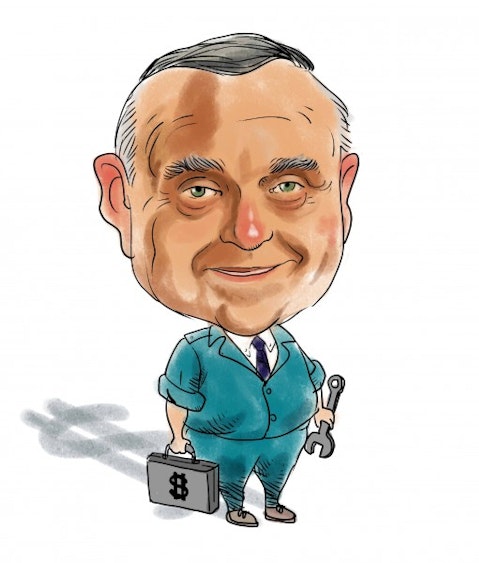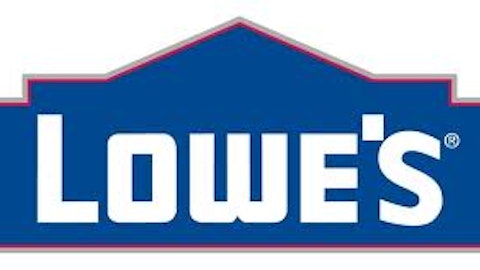Halliburton Company (NYSE:HAL) reported its results for the fourth quarter of 2012 on January 25th. Earnings were down from the fourth quarter of 2012, but even excluding one-time items the EPS figure of 67 cents beat analyst expectations. The stock rose 5% on the day and is currently up 11% year to date. While revenue increased 3% from the fourth quarter of 2011, and also rose on a q/q basis, operating costs particularly in the completion and production segment were considerably higher than a year earlier. Halliburton’s U.S. drilling business has suffered; while onshore oil activity is strong, low natural gas prices- and, in turn, cash crunches at some natural gas producers- have reduced demand for the company’s services on net.
The stock now trades at 13 times trailing earnings, which would generally be a low multiple unless Halliburton Company failed to grow its business over the next several years. Wall Street analyst estimates for 2013 imply a current-year P/E of 10, and expectations of continued growth beyond that point result in a five-year PEG ratio of 0.9. It is the case that markets are generally pricing many large oil related companies low- the oil majors themselves tend to be trading at about 10 times earnings or even lower- and so perhaps in the context of the sector this earnings multiple is not particularly attractive. However, if it is the case that Halliburton has less exposure to commodity prices or has other secular factors in its favor, that might explain the gap there and certainly it would be difficult to call it overvalued at these prices.
Halliburton was one of the ten most popular energy stocks among hedge funds in the third quarter of 2012 (see the full top ten list) as 50 hedge funds and other notable investors in our database of 13F filings reported a position in the company. Billionaire Leon Cooperman’s Omega Advisors increased its holdings of Halliburton Company by 26% during the third quarter of 2012 and reported owning 3.3 million shares at the end of September (check out Cooperman’s stock picks). The company was one of ValueAct Capital’s ten largest holdings at the end of the quarter; ValueAct is managed by Jeffrey Ubben (find more of ValueAct’s favorite stocks). Steadfast Capital Management, managed by Robert Pitts, initiated a position of 2.6 million shares.
How does Halliburton compare to its peers?
The closest peer for Halliburton is larger oilfield services company Schlumberger Limited. (NYSE:SLB). Schlumberger has also reported its fourth quarter earnings, and combined with the current market capitalization of $106 billion it is valued at 19 times trailing earnings. This is a sizable premium, and while its business has been performing slightly better than Halliburton’s in recent quarters and there should be some benefit to being a larger company it is possible that the market is giving Schlumberger too much credit for those factors.
Halliburton can also be compared to Baker Hughes Incorporated (NYSE:BHI), Weatherford International Ltd (NYSE:WFT), and Cameron International Corporation (NYSE:CAM), three other equipment and services companies. Baker Hughes, which is best known for its brand name drill bits, experienced a 32% decline in earnings last quarter versus a year earlier. At 15 times trailing earnings, we would need to be quite confident in a recovery to recommend it over Halliburton. Cameron has been reporting significant growth on both top and bottom lines, though looking at the earnings multiples some future growth has already been priced in. The sell-side is bullish and so the five-year PEG ratio is 0.9. It would be more “growth at a reasonable price” than value, but possibly still worth considering. Weatherford might be another candidate, at 12 times earnings consensus for 2013, though that company’s net income has been down as well despite higher revenue. As a result the stock has fallen 23% since last year.
In terms of earnings multiples Halliburton is fairly cheap compared to its most common comparison, Schlumberger, though of course it should be somewhat concerning that earnings growth has been stagnant and that would be a point to focus on during further analysis of the company. Cameron and Weatherford might also be targets for further research.
Disclosure: I own no shares in any stocks mentioned in this article.






